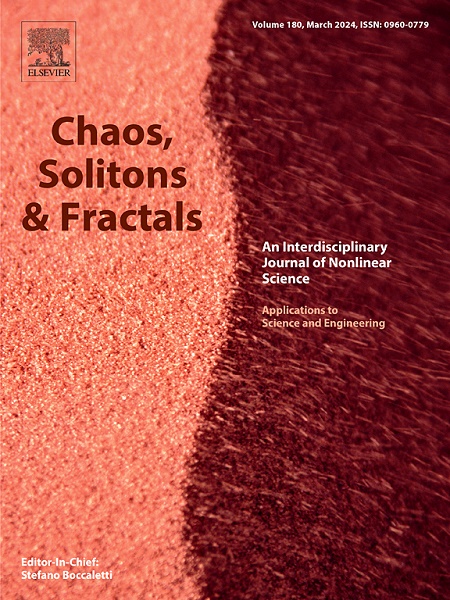Research on coupled dynamic modeling of the related potassium buffering function in astrocytes under Alzheimer's disease environment
IF 5.3
1区 数学
Q1 MATHEMATICS, INTERDISCIPLINARY APPLICATIONS
引用次数: 0
Abstract
Neurons release into extracellular space during neural activity. Astrocytes absorb excess extracellular through sodium‑potassium pumps (NKA), inwardly rectifying potassium (KIR4.1) channels and large-conductance -activated (BK) channels, to perform potassium buffering function and maintain homeostasis. Experimental results have reported that the NKA and potassium channels of astrocytes are impaired in Alzheimer's disease (AD), which affects the related potassium buffering function abnormally. Regretfully, there has not been a dynamic model exploring the related potassium buffering dysfunction and its underlying dynamical mechanism in AD environment. Inspired by this, we establish a coupled dynamic model of astrocyte-extracellular space-neuron to study the impact of the impaired NKA and potassium channels on potassium buffering function from a neurocomputational perspective under AD environment. We simulate the impaired NKA and potassium channels in AD by decreasing the maximum rate of the NKA, the conductance of the KIR4.1 channel and the conductance of the BK channel respectively. The numerical results reveal that decreasing the three parameters causes the related potassium buffering dysfunction, i.e., the extracellular and baseline concentrations as well as its recovery time are aberrant in the astrocyte, which in turn lowers the threshold for neuronal action potential and promotes neuronal excitability in the adjacent neuron. Moreover, by examining the dependence of the peak extracellular concentration and neuronal action potential firing on the three parameters, we find that the impaired NKA dominates the potassium buffering dysfunction and neuronal excitability. These simulated results are consistent with the abnormal behaviors in AD physiological experiments, which implies that this work is innovative and effective to study the astrocyte potassium buffering dysfunction and the adjacent neuron in AD environment. We hope that these findings can deepen our understanding of the pathogenesis of AD through the astrocyte potassium buffering dysfunction, and further provide insights into developing new therapeutic targets to reverse AD progression in future studies.
求助全文
约1分钟内获得全文
求助全文
来源期刊

Chaos Solitons & Fractals
物理-数学跨学科应用
CiteScore
13.20
自引率
10.30%
发文量
1087
审稿时长
9 months
期刊介绍:
Chaos, Solitons & Fractals strives to establish itself as a premier journal in the interdisciplinary realm of Nonlinear Science, Non-equilibrium, and Complex Phenomena. It welcomes submissions covering a broad spectrum of topics within this field, including dynamics, non-equilibrium processes in physics, chemistry, and geophysics, complex matter and networks, mathematical models, computational biology, applications to quantum and mesoscopic phenomena, fluctuations and random processes, self-organization, and social phenomena.
 求助内容:
求助内容: 应助结果提醒方式:
应助结果提醒方式:


